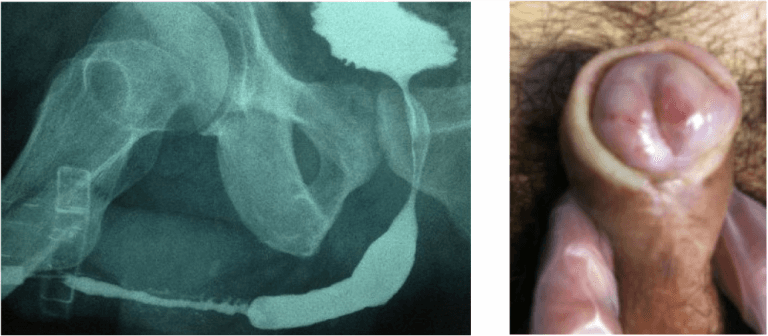History of the disease
The disease called lichen sclerosus (LS) has been reported for many years in the urological literature as BXO (balanitis xerotica obliterans). In 1995 the American Academy of Dermatology recommended using the term lichen sclerosus.
Lichen sclerosus has been described in men of all ages and is a chronic inflammatory skin disease. Lichen sclerosus can involve any skin site, but in most cases it affects the genital area. It is more common in women than in men. The cause is not known. The exact prevalence and incidence of lichen sclerosus is unknown. In 1971 the incidence of lichen sclerosus was estimated to range from 1 to 300 – from 1 to 1,000 patients under observation in a dermatology department. A study of 1,178 children with phimosis showed that in 40% of cases there was a lichen sclerosus with a higher incidence in subjects between 9 and 11 years old.
Symptoms
Lichen sclerosus causes obstructing scars that can create problems in the urinary and sexual sphere altering the quality of life of patients. The most frequent symptoms are itching, pain, difficulty in retracting the skin of the foreskin and a weak urinary jet. The clinical examination reveals the typical whitish leopard-like plaques that involve the glans, the skin of the prepuce that appears phimotic, and the stenosis of the meatus.
Lichen sclerosus and stenosis of the urethra
The involvement of the urethra in patients with genital lichen sclerosus remains a controversial topic. The dermatological literature does not report any data on the involvement of the urethra in patients with lichen sclerosus. On the contrary, urological literature began to report this problem as early as 1970. In 1999, Barbagli and collaborators, in a series of 106 patients who underwent anterior urethroplasty, documented the presence of lichen sclerosus in 29% of patients, with an involvement of the meatus in 19%, of the navicular urethra in 16%, of the penile urethra in 3% and of the entire anterior urethra in 52% of cases. A high incidence of lichen sclerosus is reported in patients undergoing hypospadias surgery. However, the relationship between lichen sclerosus and stenosis of the anterior urethra still remains controversial and further studies are needed.

Etiology
The etiology of lichen sclerosus remains unknown, although various hypotheses have been suggested:
- Autoimmune theory and genetic disorder
- Infection
- Hormonal disorders
- Local irritative factors
Therapy
The goals in treating lichen sclerosus are: to alleviate symptoms, prevent cancerous lesions, resolve urinary and sexual problems. The medical treatment of lichen sclerosus includes steroids, hormones, and systemic therapies. Surgical treatment of lichen sclerosus includes circumcision, meatoplasty, reconstruction of the urethra.
